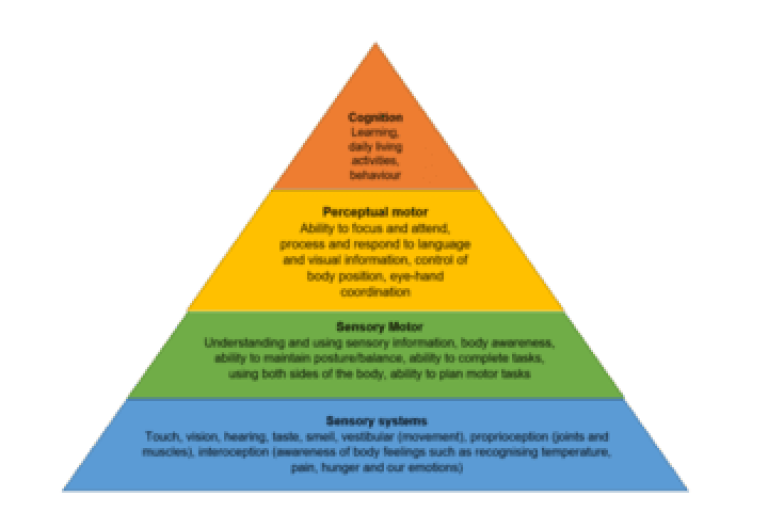Normal variations in children's development
Development follows a recognised sequence and children are not able to fully progress through these stages until they have mastered the previous underlying skills.
Motor skill development for participation in activities
Adapted from The Pyramid of Learning (© Taylor/Trott 1991).
Developmental pyramid shows that our sensory system and motor skills form the foundation for learning and performing everyday activities.

These skills are developed through natural play and exploration and the provision of opportunities to practice skills at the appropriate developmental level. Use the ‘Developmental Journal’ to see what skills are expected to be developed at what age/stage of development.
If children are late developing the underlying skills at the bottom of the pyramid, subsequent skills further up the pyramid may also be late to develop. It is therefore important to ensure that children have plenty of opportunity to practice skills at their developmental level rather than their age level.
If their skills are progressing through participation in developmentally appropriate activities, then there should be no need for concern. However, therapists are always happy to discuss any concerns that there may be.
Why building block activities matter
Children need encouragement to take part in early activities like writing and dressing. These are known as building block activities because they help develop the skills needed later on.
Very active pre-schoolers often take longer to develop these skills, this is normal. They should be gently encouraged to keep practising these everyday tasks.
Understanding hand preference
It’s common for children not to show a clear hand preference until they’re around 4 or 5 years old. This usually happens when they start doing more fine motor tasks.
Most children develop definite hand dominance by about age 7.
Mixed hand use is normal
Some children may use one hand for writing and the other for different fine motor tasks. This is fine, as long as they aren’t switching hands during the same task.
Pencil grip develops over time
It’s normal for children to start reception without a functional pencil grip. This usually develops by Year 1.
If they’re progressing through the usual stages of pencil grip development there’s no need to worry.
